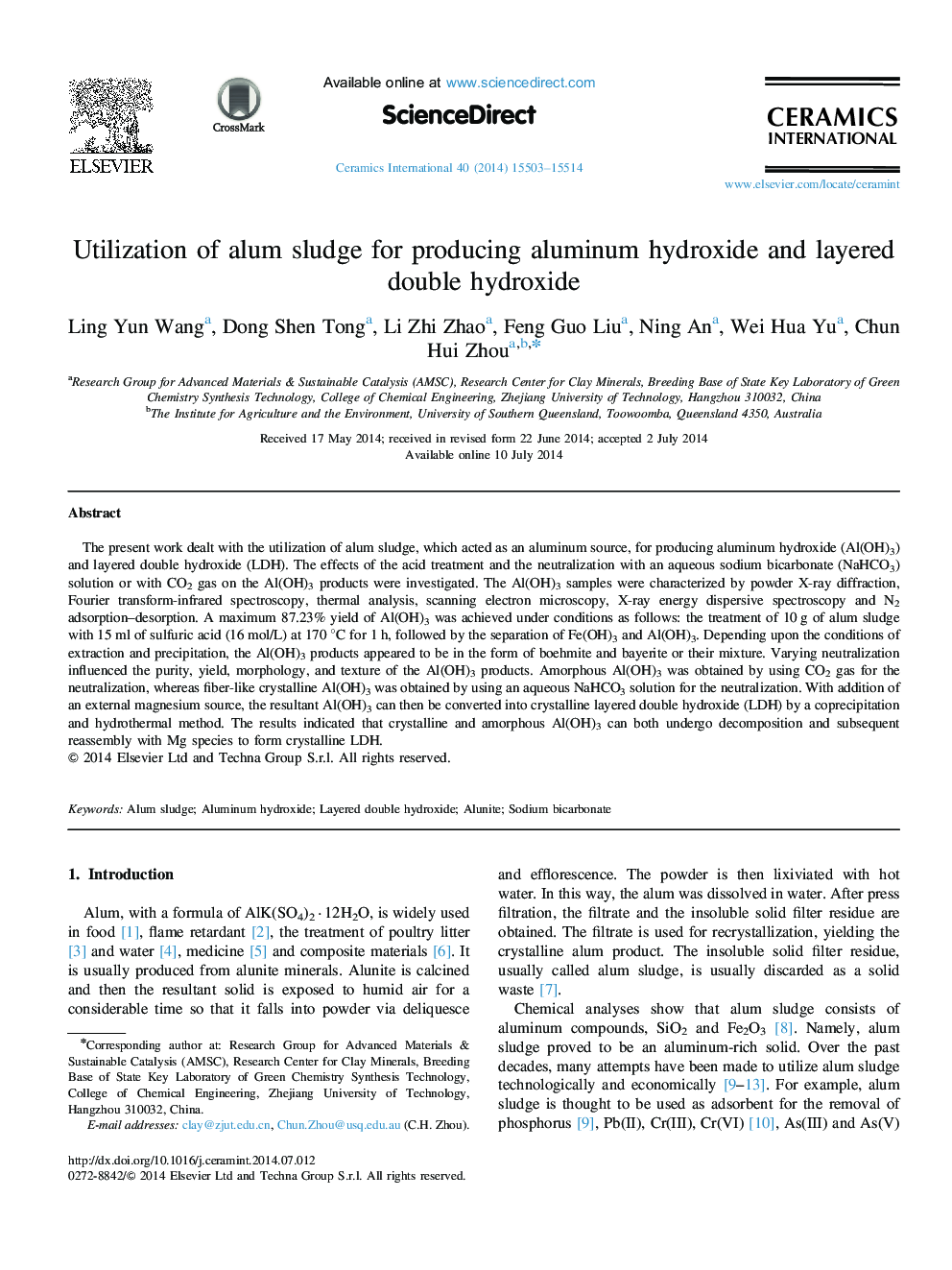| Article ID | Journal | Published Year | Pages | File Type |
|---|---|---|---|---|
| 10624838 | Ceramics International | 2014 | 12 Pages |
Abstract
The present work dealt with the utilization of alum sludge, which acted as an aluminum source, for producing aluminum hydroxide (Al(OH)3) and layered double hydroxide (LDH). The effects of the acid treatment and the neutralization with an aqueous sodium bicarbonate (NaHCO3) solution or with CO2 gas on the Al(OH)3 products were investigated. The Al(OH)3 samples were characterized by powder X-ray diffraction, Fourier transform-infrared spectroscopy, thermal analysis, scanning electron microscopy, X-ray energy dispersive spectroscopy and N2 adsorption-desorption. A maximum 87.23% yield of Al(OH)3 was achieved under conditions as follows: the treatment of 10 g of alum sludge with 15 ml of sulfuric acid (16 mol/L) at 170 °C for 1 h, followed by the separation of Fe(OH)3 and Al(OH)3. Depending upon the conditions of extraction and precipitation, the Al(OH)3 products appeared to be in the form of boehmite and bayerite or their mixture. Varying neutralization influenced the purity, yield, morphology, and texture of the Al(OH)3 products. Amorphous Al(OH)3 was obtained by using CO2 gas for the neutralization, whereas fiber-like crystalline Al(OH)3 was obtained by using an aqueous NaHCO3 solution for the neutralization. With addition of an external magnesium source, the resultant Al(OH)3 can then be converted into crystalline layered double hydroxide (LDH) by a coprecipitation and hydrothermal method. The results indicated that crystalline and amorphous Al(OH)3 can both undergo decomposition and subsequent reassembly with Mg species to form crystalline LDH.
Related Topics
Physical Sciences and Engineering
Materials Science
Ceramics and Composites
Authors
Ling Yun Wang, Dong Shen Tong, Li Zhi Zhao, Feng Guo Liu, Ning An, Wei Hua Yu, Chun Hui Zhou,
